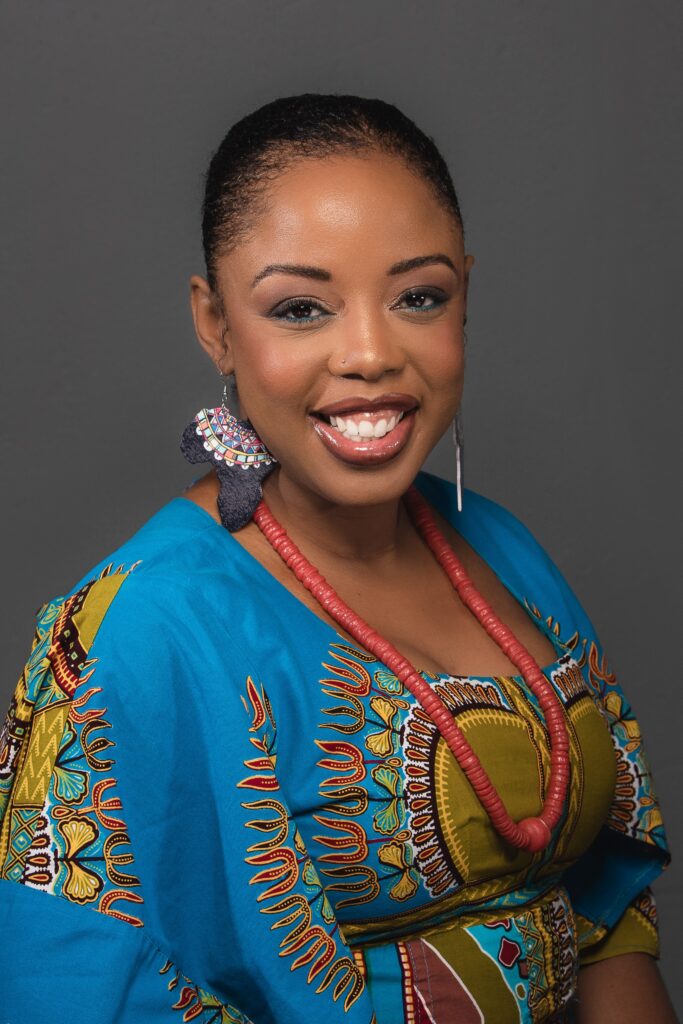Meeting Canadian Writers and Illustrators of Children’s Books
What inspires the writers of the books your students read? How does an illustrator decide what to draw? Is it true that most authors and illustrators don’t know each other? This column features a different Canadian children’s book creator in each issue and shows you the story beyond the covers.
Nadia L. Hohn’s books dance with happiness. Covers of bright colours and interesting people make me want to pick up her books and share them. Who is Nadia, and how does she write these vibrant stories? She is a teacher, holds several degrees (B.A. (Ho
Were books or storytelling important as you were growing up?
I grew up in the late 1970s to ’90s. To my parents, it was important to have the Encyclopedia Britannica and other advanced book sets in our home. I loved the ones about human anatomy and health, geography and languages, and atlases were my favourites. My father regularly took me and my sister to the library. Books became my best friends.
My father enjoyed telling stories throughout my childhood, but my mother, who is quieter, surprised me over the last few years while I was living at home. I realized that she is a natural storyteller too. As I listened more closely to how she described an experience or a person, I discovered she used tall tales, repetition, vocal inflections, metaphors, humour, and impersonations more than my father did. I think their Jamaican origins, which are inspired by African oral traditions, had something to do with it.
You were born and raised in Canada, but your stories have strong cultural connections. How has heritage played a part in your writing?
Jamaica is a big part of my imagination. I grew up in Canada, away from most of my relatives who had long since migrated to the US and UK. My childhood meant Jamaican food, Jamaican music, and hearing Jamaican patois spoken in my home. My parents grew up in rural communities, and I heard their stories from back home. I was raised in an old-fashioned Jamaican way. Jamaica always held an allure for me, existing in my imagination and my creativity. I tried to learn as much as I could about this island nation. The music, inflections in the speech, and cultural heritage inspire and move me. Miss Lou, Bob Marley, and my family’s own migration stories all enter my stories. I didn’t visit Jamaica until I was an adult. But when I did, it felt like home. I felt close to my ancestors. It was like a dream, my stories coming to life.
How do children react—kids who have never learned about Caribbean culture and those who recognize their own lives in your stories?
I have often taught at schools with large Caribbean populations. I find Caribbean-descended students—of all ages—are very receptive to stories with patois, which I include in many of them. These children will say they recognize the accent, phrases, or words when I present my stories. If I name a familiar fruit or vegetable, they laugh and say, “I eat that, too,” or “We do that, too.” Patois is an expressive language, which many children from my generation only heard spoken at home—but not in books. And it was certainly hard to find diverse stories in which characters looked like me when I was a child. So, it’s refreshing and fun to write these stories—the ones I would have wanted to read as a child. It’s essential for children to see themselves authentically represented in books. Equally, I find that children and families across Canada and around the world identify with the universal themes and experiences in my stories.
Some of your books give voice to important and historic figures like Jamaican poet Louise Bennett and Harriet Tubman. What kind of research did you conduct to be able to write these books?
For A Likkle Miss Lou, I read the books that Louise Bennett Coverley wrote. I went to her archives at McMaster University, read more of her work, and watched and listened to her songs and presentations. I spoke with people who knew Louise Bennett before she passed away. Conveniently, she lived her last twenty years in Toronto, so this wasn’t difficult. For Harriet Tubman Freedom Fighter, quite a lot was written about my hero, but it was difficult to find primary source materials. Harriet Tubman was a Black woman who was enslaved, then self-emancipated, but illiterate. I knew that any primary source material was most likely recorded by white biographers at a time when racist ideas were commonly held and injustices against Black people permitted. I used what I knew about this history and tried to review and read as widely about Harriet Tubman as possible. As I did so, I found evidence to support the primary sources. When writing non- fiction, fact-checking is often part of the editing, so experts were called into the editorial process. I was surprised to find how much I loved writing non-fiction. It allows me to focus on topics that I enjoy, while fiction allows me to play and imagine, sometimes reimagine, reality.
I love the Malaika books. How autobiographical is she?
Malaika lives inside of me. She is that resilient part of me, the part that loves and clings to her culture and her family. She is fun, authentic, clever, and expresses all of her feelings openly. She is curious, dreamy, and intuitive. I used some details of my family history as the basis for Malaika, e.g., migration, the birth of my youngest sibling, and my migrant worker grandfather, whom I’ve never met.
Malaika’s Costume was selected as a TD Bank Book Giveaway title. Did that change or influence your work as a writer?
The TD Bank Book Giveaway changed the way that I saw my stories and characters taking up space. It helped me to see Malaika in a much bigger way. I went from writing Malaika’s Costume in 2010 and keeping it on my computer, unsure if it was “good enough” to be published, to seeing my published book as a Santa Claus parade float, an event I grew up watching on TV in 2021. I went from being a teacher searching for books featuring Black characters for my first graders to being the author giving out a book featuring a Caribbean Black girl to over 500,000 children. The experiences helped me to dream BIGGER.
Tell us about the making of The Antiracist Kitchen in which 21 authors celebrate race through recipes. How did that come about?
The Antiracist Kitchen came about by wanting to 1) create a book that celebrated authors who are Black, Indigenous, and Persons of Colour, 2) my love of cooking and desire to write a cookbook, and 3) the events that took place in 2020 which sparked a global racial justice movement. I created a proposal for this concept and approached Orca Book Publishers. They were on board immediately. Then, I began to reach out to the contributors.
What do you do during school visits?
My interactive presentations often include reading, storytelling, music, and other art forms like movement. I also deliver writing workshops and can customize a workshop for a school. I draw from my experiences as a teacher of over twenty years and a musician. I bring all of these skills and experiences to my presentations.
Find out more about Nadia L. Hohn here:
Instagram: @nadialhohn_author
X: @nadialhohn
LinkedIn: https://ca.linkedin.com/in/nadia-hohn-4aa83b74
Facebook: http://www.facebook.com/nadialhohn
Margriet Ruurs
Margriet Ruurs is the author of over 40 books for children and conducts (ZOOM) school presentations: margrietruurs.com
Enjoy her travel-and-books blog here: globetrottingbooklovers.com
This article is featured in Canadian Teacher Magazine’s Spring 2024 issue.

